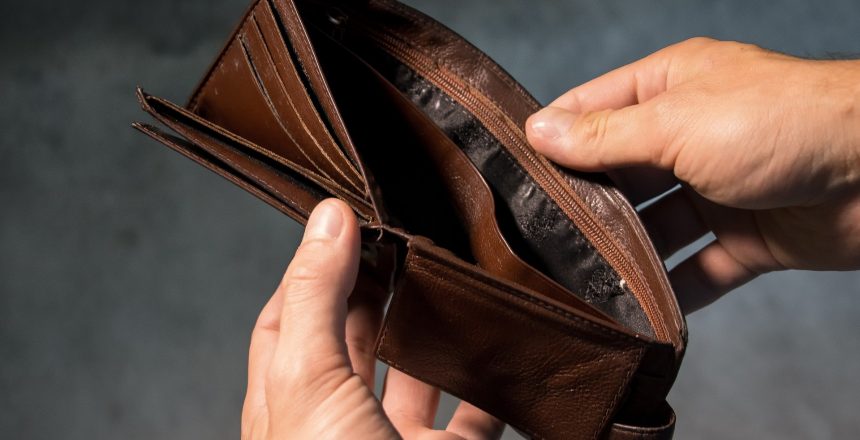In almost all cases, leaseholders are collectively responsible for paying for the repairs and maintenance of the block in which their flat resides. Freeholders on the other hand, typically have the responsibility of deciding how leaseholder’s money is spent. However, it is of vital importance that freeholders do not abuse this power and ensure that any costs for works are reasonable. Not only is this a legal requirement dictated by Landlord and Tenant Law, but it is also disrespectful and simply unacceptable to take advantage of leaseholders.
Whether leaseholders are responsible for paying for the repairs and maintenance of their block and to what extent, is governed by their lease. Leases contain a variety of terms and conditions, rights, and responsibilities of both the leaseholder and the freeholder, which must be legally upheld. Importantly, leaseholders do not have to pay for anything that is not included in their lease, while freeholders do not have to provide any services which are not included in the lease. As a legal document, leases can be difficult to interpret, so it is wise to seek assistance if you are at all unsure about your obligations as a freeholder or leaseholder.
In cases where leaseholders do have to pay for maintenance and repairs, there will usually be a clause in the lease that states that the landlord (freeholder) has the right to carry out and recover the cost of specific works and services. It should also state whether the leaseholder will have to pay for these works or services before or after they have been carried out and whether these payments should be made annually or periodically. Such payments are usually recoverable as part of a ‘service charge’.
What is a service charge?
A service charge is generally payable by leaseholders to the freeholder in return for the following:
- Repairing and maintaining the building, lifts, and grounds
- Lighting, heating, cleaning, and garden services, etc. in shared areas.
- Building’s insurance
- Reserve fund and/or sinking fund
Leaseholders may also be required to pay reasonable management and administration costs, which are governed by the Commonhold and Leasehold Reform Act 2002. In order to obtain these costs, the freeholder must provide the leaseholder with a summary of their rights and responsibilities relating to the administration charges with the demand. The freeholder may also be able to obtain legal costs for recovering any arrears or as a result of court action or a tribunal decision.
What is a reserve fund?
A reserve fund is collected to cover the long-term costs of maintaining a building, which can often include unexpected, irregular, and expensive works. While the costs for maintaining and repairing the building are generally collected as part of the service charge, the reserve fund will help to bridge the gap between the budget and actual expenditure. As such, the amount collected does not need to be excessive. Conversely, the collection of a reserve fund does not always mean that there will be enough cash to cover expenses. Consequently, leaseholders will have to make up any shortfall.
Therefore, a reserve fund is a practical measure to ensure that leaseholders do not encounter large one-off bills at the time when works are required. Yet, not all leases will have this provision, and it should be highlighted once more that leaseholders should not pay for anything that is not in their lease. However, when leaseholders are required to pay into a reserve fund, the monies must be held by the freeholder or management company in trust, in a separate, interest-earning bank account. This is dictated by Section 42 of the Landlord and Tenant Act 1987.
Crucially, reserve funds must not be used for any purpose other than to meet the cost of major work expenditure. For example, reserve funds cannot be used to meet a deficit in the service charge, that is unless all leaseholders agree to it. These legal measures ensure that reserve funds are safeguarded for leaseholders and cannot be used to pay creditors in the event of the freeholder going into liquidation.
How are reserve fund contributions calculated?
The way that reserve fund payments are calculated is entirely dependent upon what is stated in the lease. While some leases may state an exact amount that the leaseholder is required to pay, it is more common for there to be no stipulated amount. In which case, the freeholder will be required to calculate each leaseholder’s contribution. Of course, any amount demanded must be reasonable, thus it is wise to work with a professional surveyor in order to determine future works and expenditure, and to be able to demonstrate ‘reasonableness’.
If there isn’t a provision for a reserve fund in the lease, leaseholders may wish to vary their lease to facilitate the collection of these monies. However, in order to vary a lease, it requires not only all leaseholders to agree but the freeholder as well. Varying leases can also be an expensive and lengthy process. Additionally, leaseholders should be aware that any contributions made toward reserve funds cannot usually be reclaimed when selling your flat. Though, a well-managed reserve fund can actually help to enhance the value of a property as prospective buyers will view this as a benefit.
What is a sinking fund?
A sinking fund is collected to cover the future costs of periodically recurring works, such as painting the common areas of the building every five years or maintenance of the roof every ten years. The monies can also be used for periodic maintenance or replacement of wasting assets such as the boiler and lifts. These types of works are often written into leases together with the specific time scales to which they must be carried out.
Due to the nature of lease wording, which can be very vague, sinking funds and reserve funds can often be confused. Although they may appear similar, they are for very different purposes, yet some people may still incorrectly use the terms interchangeably. However, in the same manner as a reserve fund, a sinking fund must be held in trust, in a separate bank account to any service charge monies.
Calculating service charges
The calculation of service charges is dependent on a number of factors such as the general condition, age, and structure of the building together with the number of dwellings. It is considered good practice for freeholders to employ an expert building’s surveyor in order to produce a schedule of maintenance, thus enabling accurate service charge calculations. In some cases, however, the service charge is worked out simply by referring to the freeholder’s costs in meeting their obligations, as set out in one of the schedules in the lease. On the other hand, the lease may state that the freeholder can only recover a percentage of their costs or a reasonable amount.
Yet, as highlighted above, all costs demanded by the freeholder must be reasonable, and this includes every item included in the service charge. This is dictated by the Landlord and Tenant Act 1985, which sets out the requirements for making sure that costs are reasonable while allowing works to be carried out to a reasonable standard. As such, freeholders are not usually allowed to make a profit from managing their building, however, they are also not required to keep costs to a minimum.
Service charge payments
In order to obtain service charge monies from leaseholders, freeholders must demand the sums in writing and provide their name and a correspondence address in England or Wales. Although, this does not apply if leaseholders are required to pay the service charge to a management company in accordance with their lease. It’s important to note that leaseholders will not be required to pay anything unless they have been provided with this information.
While it is typical for the lease to allow freeholders to request these charges in advance of the works or services being carried out, they can also be demanded within 18 months of the freeholder becoming liable to pay. If the demand is issued later than this, freeholders will not be able to recover the cost of the works or services undertaken. Crucially, leaseholders are entitled to request to see copies of any invoices related to such works. Furthermore, they have a legal right to see the entire service charge account and investigate the way the building is being managed as a whole.
Payments in advance
If leaseholders are paying for works and services in advance of the expenditure, and the total actual expenditure works out to less than what has been collected in advance, those sums must be carried forward to the next service charge period. Therefore, any surplus will not and should not be placed into any reserve fund or sinking fund.
Requests to see service charge accounts
When a request is made to see the service charge accounts, it must be done so in writing by the leaseholder. The freeholder will then have to provide the following information:
- How the costs relate to the service charge demand, or that they will be included in a later demand (if this applies);
- Items which the landlord did not receive a bill for during the accounting period;
- Items which the landlord received a bill for but which they didn’t pay during the accounting period;
- The balance of the reserve fund, as represented in cash, together with any interest that has accrued;
- Items which the landlord received a bill for and which they paid during the accounting period; and
- Whether any of the costs relate to work for which an improvement grant has been or will be paid
What happens if a freeholder fails to provide service charge account information?
It is a summary offence for a freeholder to fail to provide leaseholders with access to service charge account information, and rightly so. Consequently, freeholders can be convicted and may be liable to pay a hefty £2500 fine.
Disputes regarding service charges
It is common for leaseholders to challenge service charges and other demands for money made upon them by the freeholder. When this occurs, it’s not always easy for both parties to reach an agreement, so a third party must be brought in to resolve the situation. This intermediary is known as the First Tier Tribunal, which deals with most leasehold financial matters. When presented with evidence in reference to a case, they will make a decision on whether or not the charge(s) can be deemed reasonable. Of course, there are costs involved, which must be carefully considered before applying for a hearing.
What happens if a leaseholder fails to pay the service charge?
When a leaseholder fails to pay their service charge, they can face legal action in the form of County Court Judgments. This will leave a long-term mark on their credit report, which will affect their ability to apply for credit for years to come. The freeholder or management company may also contact the leaseholder’s mortgage company to request the arrears. Mortgage companies are likely to pay the monies owed in order to protect their investment but will pass on the cost to the leaseholder, together with any administration charges.
Of course, if the failure to pay continues, the mortgage company may take action to repossess their property from the leaseholder. The freeholder may also take action to begin forfeiture proceedings in order to regain possession of the property, although this is very difficult to achieve in practice.
Further reading
I’m a freeholder, what are my responsibilities?
How to successfully organise maintenance and major works
8 Winter maintenance tips for freehold properties
A guide to the Section 20 Consultation process for major works


